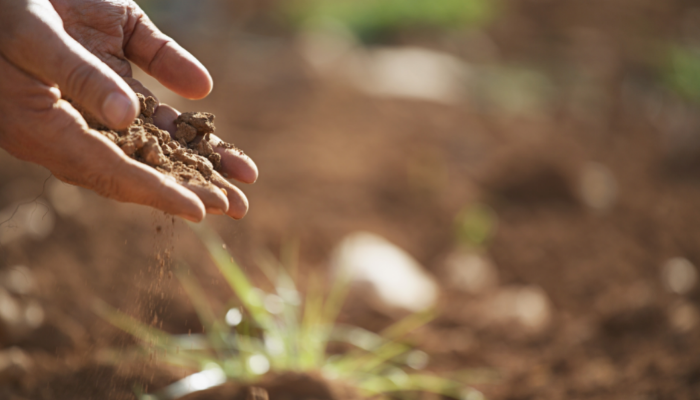A guide to soil testing on fruit and vegetable farms

The content of this article 'Soil testing on fruit and vegetable farms' was prepared by The University of Minnesota Extension and has been revised and republished by FreshFruitPortal.com.
For the latest information, check the University of Minnesota's website here.
Soil testing is a foundation for nutrient management. A soil test provides baseline information about the amounts of nutrients available in your soil, and what is needed for healthy plant growth.
Specialty crop growers should test their soil at least every 2-3 years, and every year in high-value production environments such as high tunnels.
Testing every 3-5 years is sufficient for perennials like berries, orchards and grapes, but more frequent testing is useful for diagnosing problems or evaluating recent amendments.
For more information regarding proper procedures and timing for plant tissue sampling, refer to our page on foliar testing.
Soil testing: Why, when and how?
A soil test provides information specific to your crops and soil. It also incorporates past cropping history, giving you nitrogen "credit" for legume crops incorporated into your rotation.
You can save time, money and angst by getting lime and fertilizer recommendations rather than guessing what might be best.
By applying only what is needed, you will also minimize any adverse environmental impacts from fertilizer overuse.
Excess soil nutrients contribute to problems such as algal growth in lakes (too much phosphorus) or nitrates in groundwater (too much nitrogen).
Sampling before or after planting is generally most convenient, such as in early spring or late fall. With diverse crop rotations in vegetables, you may prefer other times of the year.
Try to sample at the same time each year, in order to get good comparisons across years.
If you suspect a severe nutrient deficiency during the season, you can also sample at that time, but it may be too late to completely 'fix' a deficiency once crops have shown symptoms.
However, you may still be able to improve overall growth and be better prepared for the following year.
Choosing a soil lab
The University of Minnesota Soil Testing Laboratory offers soil tests specific to commercial fruit and vegetable growers at highly competitive prices.
The 'regular series' soil test will give you estimated soil texture, organic matter, phosphorus, potassium, pH and lime requirement.
Additional tests are also available, such as calcium and magnesium; zinc, iron, copper and manganese; and boron.
Nitrate to 24 inches and sulfur are also offered but are only recommended under specific circumstances, as described in the instructions on the soil test submission form.
You can also test for lead or soluble salts. While most Minnesota soils are generally considered non-saline, soluble salts can be problematic in high tunnels and should be monitored, particularly in soils that are not well-drained.
While soil lead is low in Minnesota soils, the lead test is recommended for urban soils that may have been contaminated with lead.
Some farmers choose to use private labs that offer additional tests related to soil health, such as Cation Exchange Capacity (CEC). CEC is a measure of a soil’s ability to retain exchangeable cation elements (potassium, calcium, magnesium), and some growers like to monitor changes over time.
However, CEC is closely related to soil texture and organic matter and changes very slowly over time.
Knowing the CEC of your soil is not necessary for making nutrient recommendations; instead, recommendations are based on soil texture, % organic matter, and the concentrations of nutrients in your soil. For more information about CEC, organic matter, and soil health, refer to Soil organic matter in cropping systems.
Interpreting your results
Your soil test analysis will come with an interpretation of results and recommendations for fertilizing based on what plants you want to grow and your anticipated yields.
For more information about yield estimation and fruit and vegetable nutrient requirements, refer to the Nutrient Management for Commercial Fruit & Vegetable Crops in Minnesota bulletin.
Growers are welcome to reach out to their local Extension educator or statewide fruit and vegetable educators for assistance with nutrient management decisions.
Home gardeners should reach out to their local Master Gardener chapter or submit a question through the Ask a Master Gardener page for assistance.
Source: University of Minnesota








































